



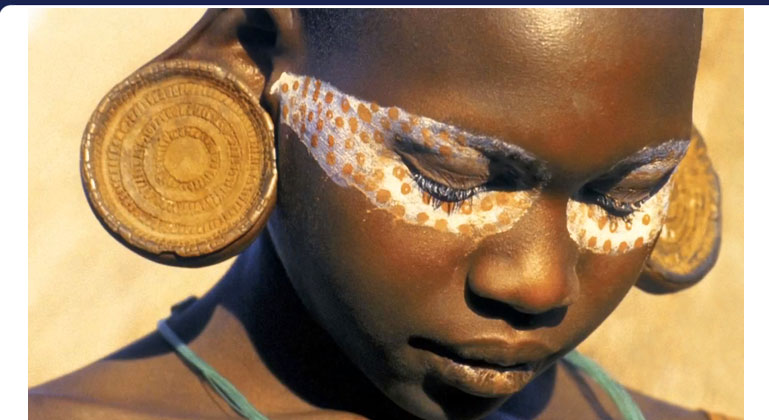
Resonant Standing Waves in Surma Body Art
Body Art Wave Patterns of the Surma Culture
by Alex Putney for Human-Resonance.org
May 27, 2013
Among the many ancient cultures of present-day Africa that still emphasize their beauty in the ways of their ancestors, body decoration styles of the Surma tribe of southwest Ethiopia have become widely appreciated. Arrays of dots, waves and concentric circles highlight the many senses that determine the alignment of human consciousness; the eyes, the ears, and the pineal gland or 'third eye'.
Decades of photographic portraiture in Surmaland by Carol Beckwith and Angela Fisher have focused a global eye on their deeply connected spiritual heritage. These people still walk their ancestral lands, albeit diminished in range, barefoot in contact with the Earth, sleeping on grass mats that do not impede geoelectrical signals.
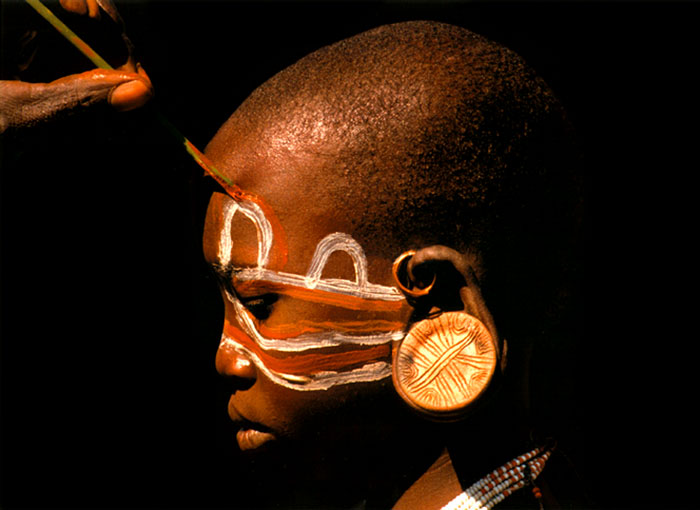
Sacred patterns that have adorned the people of this region for thousands of years present simple designs comprised of interconnected lines, waves and circles that clearly present the geometric structure of resonant standing waves. Wisdom traditions of the Surma people confirm that the many specific ways in which these patterns are presented is done in awareness of the sacred bioelectrical effects of focused infrasound that synchronizes consciousness.
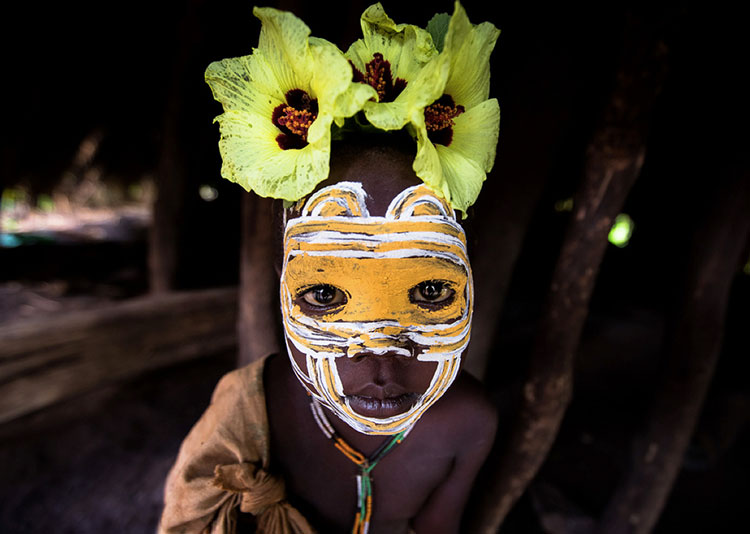
The geoposition of the ancestral territory and ceremonial sites of the Surma culture, including the Mursi, Me'en, Suri and other tribes, are located along a resonant band of infrasound focal points that encircles the Great Pyramid of present-day Giza, Egypt. These sacred landscapes of southwestern Ethiopia lie between the Upper Nile River and the Omo River, to the south of Giza's remarkable psychoacoustic monuments.
Surmaland, Ethiopia (6.63°N 35.78°E) is 1,634 miles from the Great Pyramid. This resonant distance interval comprises 6.6% of the Earth's mean circumference of 24,892 miles, or 1/15 of the great circle distance. Infrasound standing wave resonance stimulated by solar activity becomes focused through the axes of the world's pyramids into a nonlinear distribution pattern precisely reflecting the quantum iterated function [ zn+1 = zn2 ] (after P. Bourke).
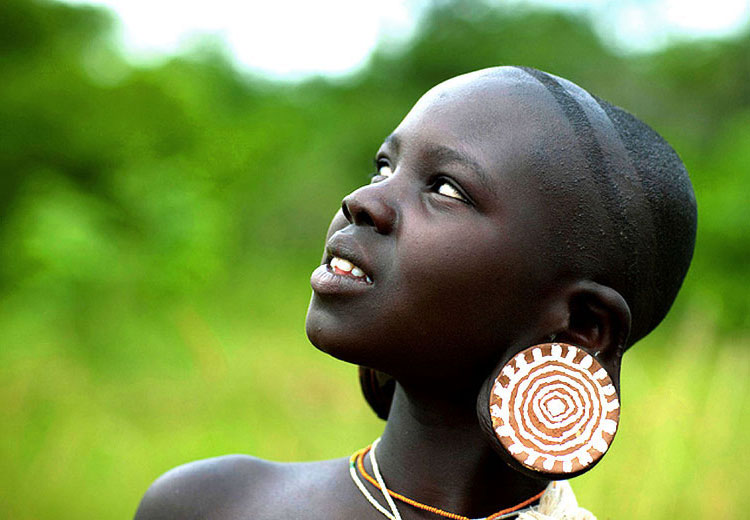
While the mathematical form of expression given in algebraic terms seems quite unrelated to the patternwork of indigenous adornments, when the seed function is graphically rendered by iteration the direct correlation is obvious. Circular ear plugs and lip plates lend themselves to a wide variety of designs that have only recently become closely associated to the mandala formations that are being impressed upon agricultural fields by luminous plasma orbs in diverse parts of the planet.
Scarification of the body is also common on the tribes of the Surma culture. Women commonly display scars on the forehead presenting a double row of wavey lines, or circular or waveform dot patterns on the breasts and abdomen.

The gradual expansion of small ear plugs and lip plugs during childhood into large ear plates and lip plates during adulthood is another form of body modification that is closely associated with the beauty asthetic among the Surma. Scarred lip tissue is just part of the expansion process (above), with lip plate designs showing the octagonal alignment of resonant infrasound standing wave arcs. Some women have lip plates inserted in both the upper and lower lips, which obviously require temporary removal during eating and drinking.
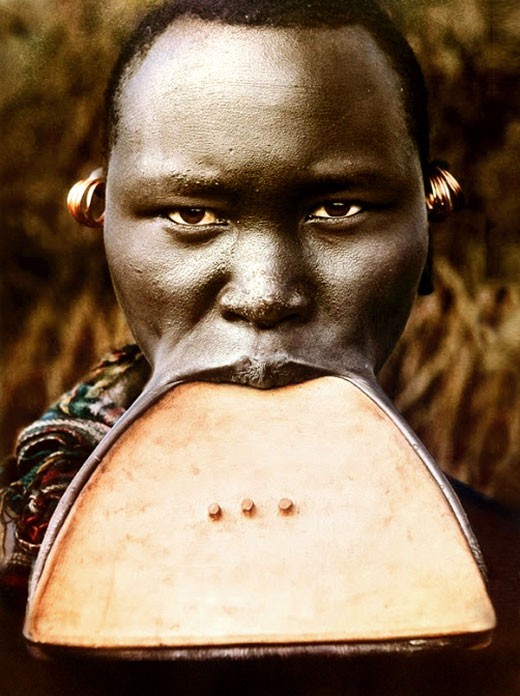
One particularly interesting style of lip plug is not circular, but takes the exact form of a standing wave with a flat bottom representing the ground plane and 3 dots in a horizontal central row referencing the 3 base frequencies generated by the three main pyramids at Giza (above). This remarkable consistency with symbolic language used by all other Sanskrit-descendant cultures like the Maya of Central America is an unambiguous sign of their shared cultural heritage.
Repetition of these sacred waveform and concentric circle patterns on the ear plugs, lip plates, headbands, and necklaces of infants, children and adults is echoed in their hairstyles, which are often kept very short, shaven with concentric circles over the crown chakra, or with one or more lines or stripes of hair, arching from one ear to the other (below).
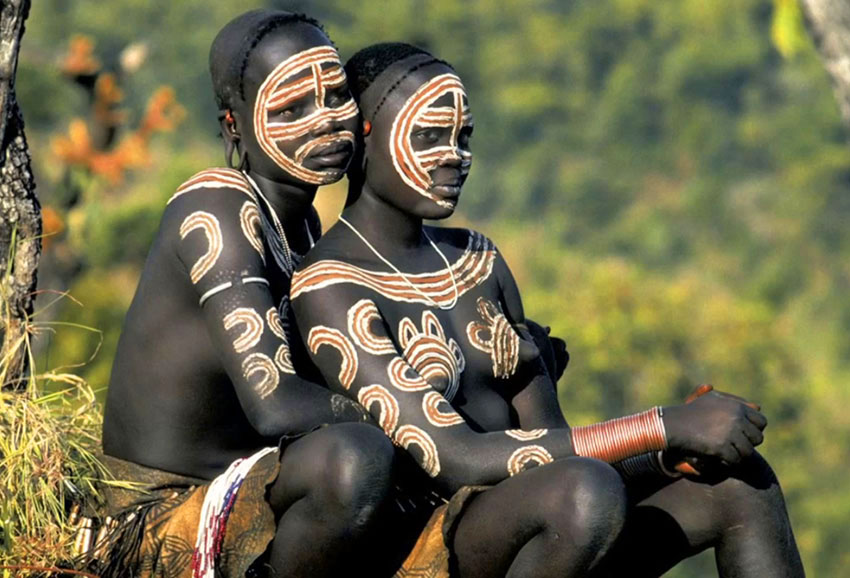
Ancient Sanskrit cultural links that extend around the world are clearly evident in these sacred wave patterns that have been visually transmitted across Ages of time. These special concentric circular and standing wave arc patterns are seen among indigenous African tribes and throughout the world, carved in virtually identical form on the megalithic standing stones lining the resonant passage chamber of Gavrinis, France and among Australian Aboriginal artists in the sacred markings of stone and wooden tjuringa, bullroarers and paintings on rock, bark and sand.
Typically, friends of the same gender paint each other in a ritual that is carried out among close family groups throughout their lives. White chalk and ash stand out sharply on the warriors' dark skin, while more colorful patternwork is applied by women and children who are not as concerning with looking feirce for battle.
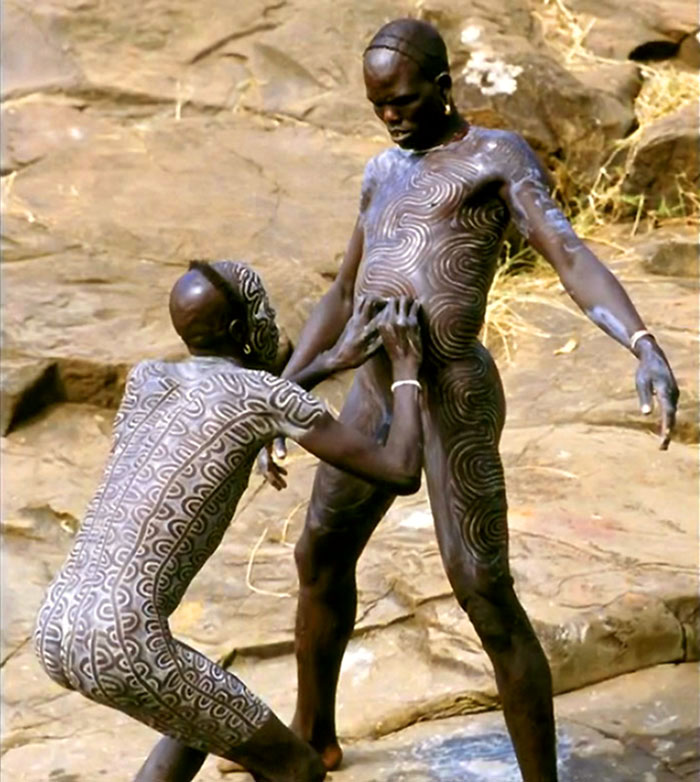
Men paint their bodies with chalk in mesmerizing concentric waveforms that snake up and down their torso and thighs, in preparation for Donga stick fighting competitions where individuals demonstrate their strength and endurance of pain by engaging their opponent with optional protection allowed only on their forearms, neck and head.
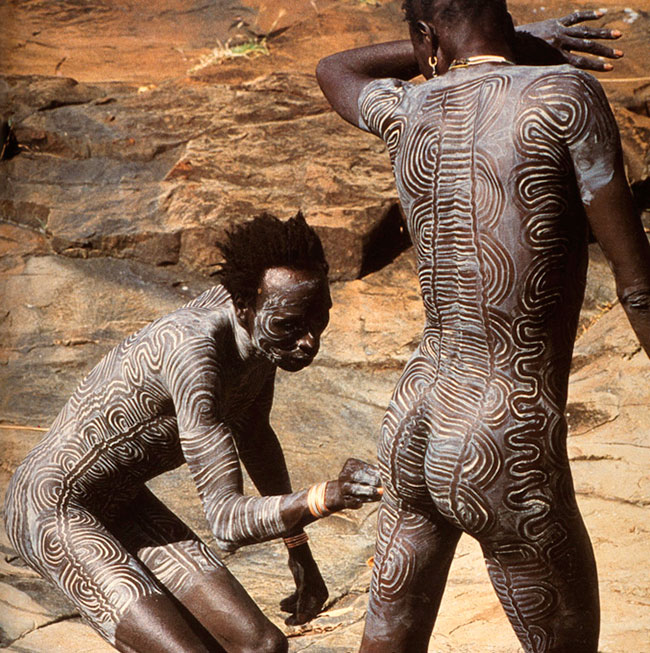
Living almost entirely without clothing, wearing mostly paint and adornments in the equatorial African climate of southern Ethiopia emphasizes the simple elegance of sacred body decoration among the tribes of Surmaland. The herding traditions that have been adopted during these changing times are far predated by the deeper cultural practices of body art that have not changed significantly over the last 100,000 years.
Recognition of the unified sacred dimension of reality that binds our collective consciousness follows from the cross-cultural synthesis of ancient indigenous culture and modern psychoacoustic science that calls us all back into the harmony of Oneness.
Copyright 2013-2014 Alexander Putney